Labels for Safety, Visuals and Facility ID Desktop Printers
Labels for Product, Wire and Lab ID Benchtop Printers
Labels for Safety, Visuals and Facility ID Desktop Printers
Labels for Product, Wire and Lab ID Benchtop Printers
Safety and Facility ID Desktop Printers
Product, Wire and Lab ID Benchtop Printers
Barcode Scanner and Printer Kits
Barcode Scanner and Printer Kits
PaintStripe Floor Marking Stencils
Valve Lockouts & Hose Lockouts
Group Lock Boxes & Permit Control
Brady Safety Lockout Tagout Services
Pipe Marker Accessories & Mounting Brackets
Maintenance and Production Tags
Calculators and Assessment Tools
Product Finders and Data Sheets
When it comes to industrial labeling, success hinges on selecting the printing technology that aligns closely with the jobs to be done. Thermal heat transfer (THT) and inkjet printing technologies each offer specific strengths and ideal application scenarios. Take a look at how they work, where they excel and critical factors when deciding how they both can fit holistically into your industrial labeling initiatives.
THT printers utilize a specialized ribbon containing a precise layer of meltable wax or resin. During printing, the heated printhead presses against this ribbon, melting the selected areas and transferring them directly onto the label surface.
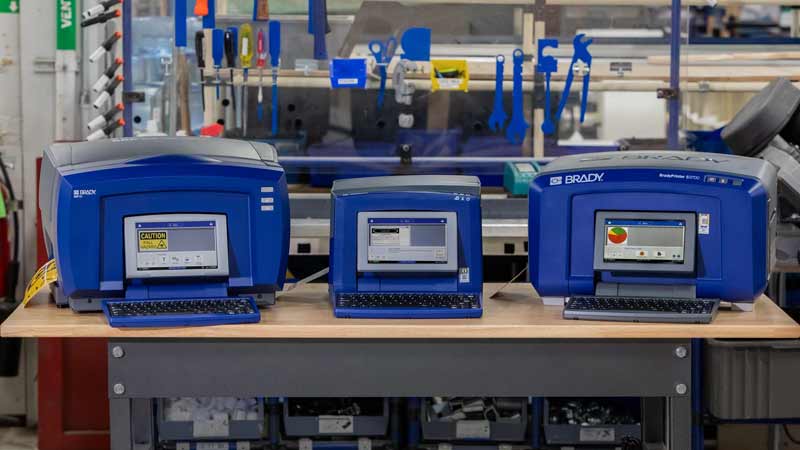
Inkjet technology involves a seemingly simple yet precise process. Tiny ink droplets, as small as 100 microns wide (thinner than a human hair), are meticulously sprayed from the printhead onto the label surface without any direct contact by the printhead. This enables the printing of high-quality images and text.
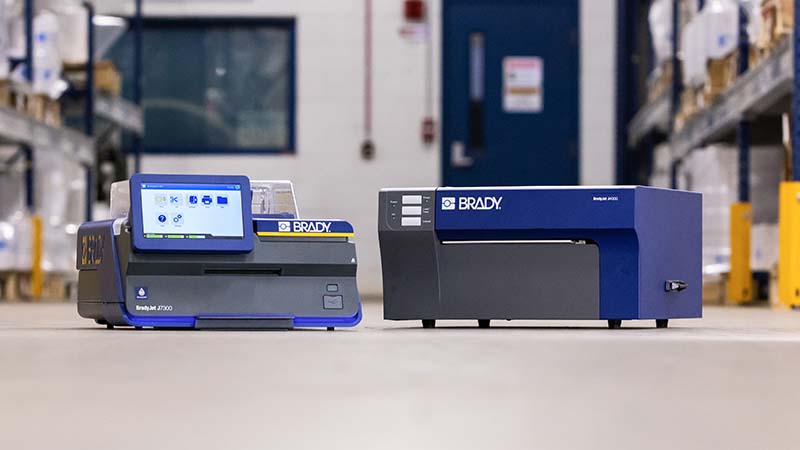
To unlock your ideal solution, evaluate the color, conditions, connection and content needs of your labeling.
Key question to ask yourself: Will the labels primarily contain basic text, barcodes and single color, or graphics, photos and labels?
Key question to ask yourself: What degree of abrasion, chemical contact, sunlight intensity, temperature fluctuations, or moisture must the labels withstand on a daily basis?
Key question to ask yourself: How will my label designs be created and managed and where will the label data come from?
Key question to ask yourself: How often will the labels be printed (high-volume or low-volume runs), and will the design and content remain static or change frequently?
Choosing the right industrial printer is an investment in your operation's efficiency, accuracy and adaptability. Brady’s comprehensive lineup of THT and inkjet printers helps you conquer the specific labeling challenges you face. Get reliability, intuitive operation, easy setup and unmatched label durability no matter which printer you choose and get every label job done right.
Unleash your true colors with Brady’s most advanced inkjet printer yet. It makes full-color printing for changing labeling needs easy with automatic label setup, easy operation, intuitive label creation and complete label durability.
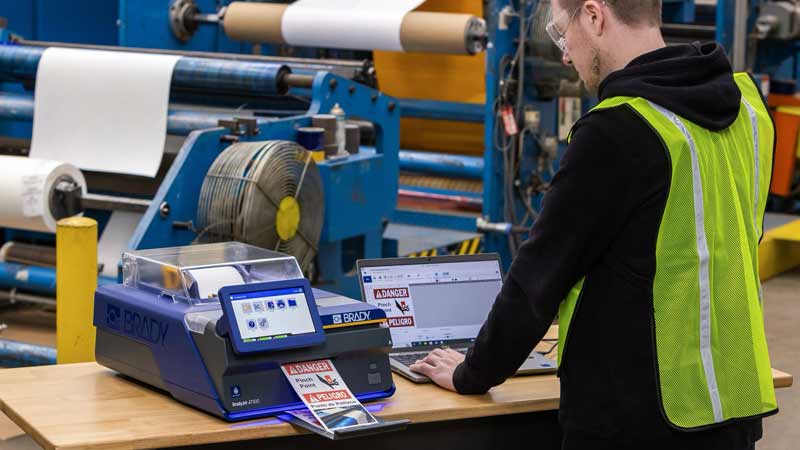
For larger full-color labeling and signage up to 8 inches wide, the J4000 printer offers the ease of use and label options you need.
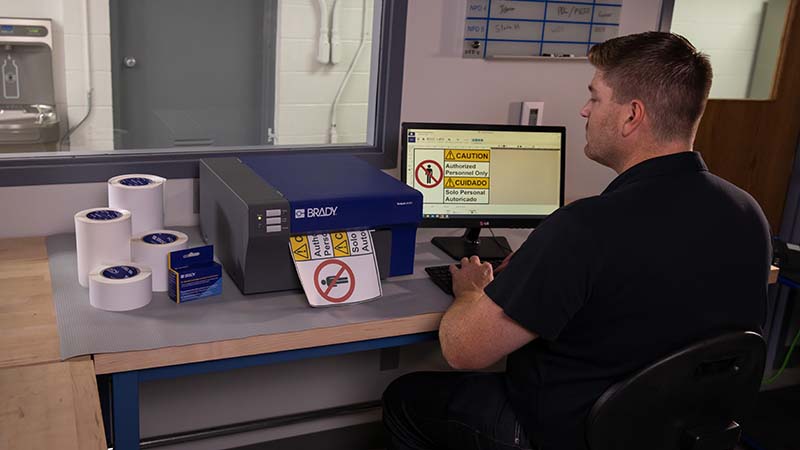
For simple, single-color printing up to 4.25" wide, the S3100 is an easy choice. It’s ideal for multi-user areas or locations tight on space or security with no PC access.
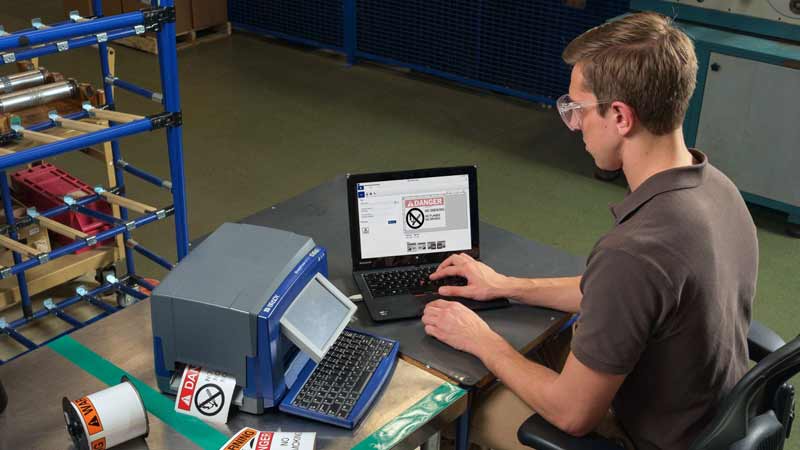
Combining bold multicolor and precision shape cutting, the S3700 is optimized to print a wide variety of labels 0.5 to 4" wide.
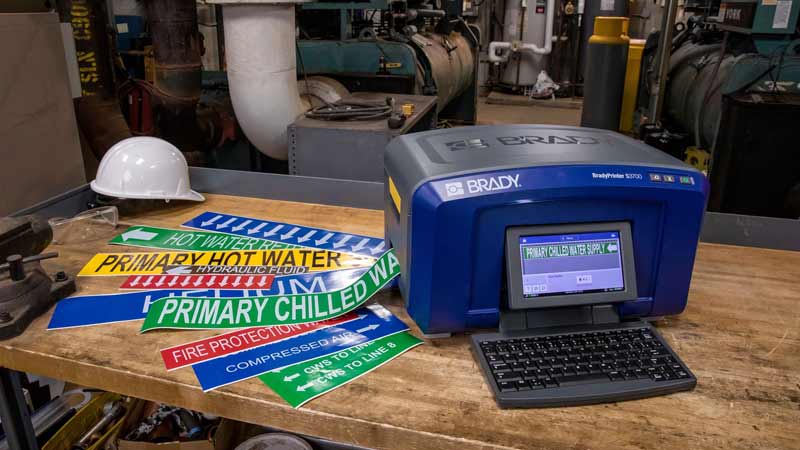
The optimized 10” wide format and multicolor capabilities of the BBP85 gives users the tools to create labels and signs that make a big impact.
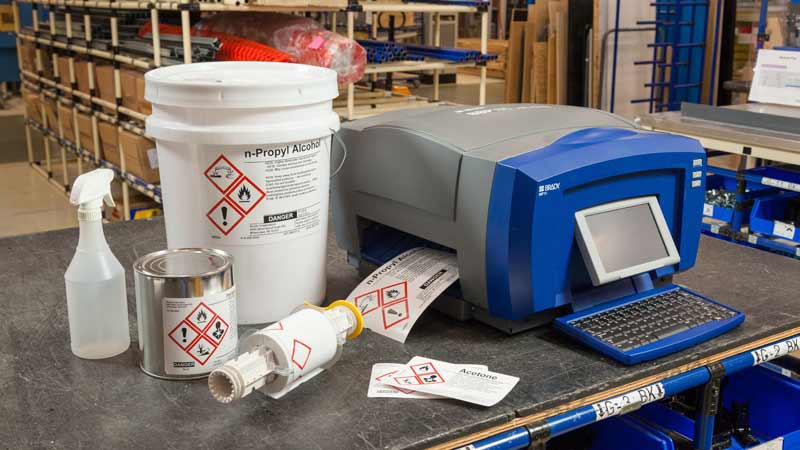
For maximum labeling versatility, consider a combination of THT and inkjet printers. This strategy empowers you to tackle the full spectrum of labeling needs, from long-term durability to photo and graphics printing. Contact a Brady representative to craft the ideal printer solution for your facility.

Explore the distinct features and applications of Direct Thermal and Thermal Transfer label printers.
Uncover the best printing style for your operations
A guide to understanding different label printer types including thermal, Inkjet and direct thermal.
Discover the difference in printers
Your guide to the advantages of on-demand versus preprinted labels to suit your operational requirements.
Compare preprinted vs. on-demand labels